What is track lighting?
A track light is a design that involves mounting individual light sources on a special busbar. The lights can be placed anywhere on the base, which opens up a lot of possibilities for adjusting the directional lighting.
Track lights consist of:
- shades with lamps,
- a guide (busbar, track),
- plugs,
- connectors,
- hangers (not always needed)
- and a voltage transformer.
The operating principle is simple: the track performs 2 functions – current distribution and holding the lamps. The busbar is attached directly to the wall/ceiling, or installed on hangers. Wires are connected to it, then lamps are installed using special clamps.
Thanks to the presence of special connectors and the ability to change the standard size, track structures are assembled in different shapes and dimensions.
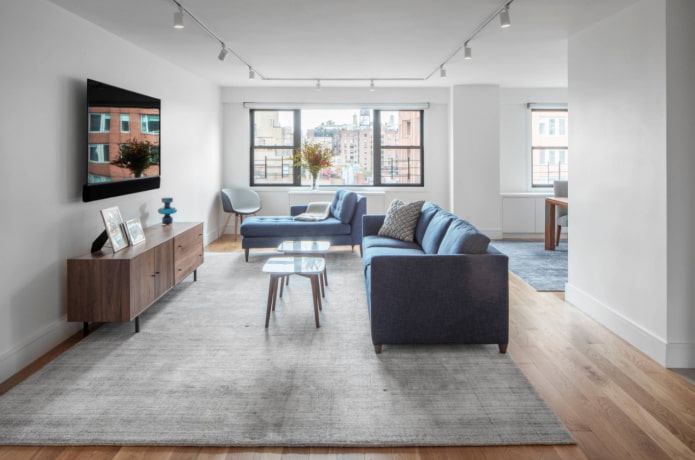
The photo shows an example of using track lighting in the studio
Pros and cons
Advantages of a track lighting system in the interior:
- Easy installation. Installing a functional system is no more difficult than fastening a chandelier.
- Wide adjustment options. Not only the direction of the light flux changes, but also the scattering angle, as well as the installation height.
- Reconfiguration. Have you changed the space by rearranging it? Adjust the light by simply turning or moving the lamps.
- Large selection. Track lights come in different colors, shapes, and sizes. There are options for various interior styles on sale.
- Versatility. Often, a track is enough for 100% room lighting. It performs the functions of ceiling, directional, and wall lighting.
There are practically no disadvantages to track lights in the interior. The only downside is perhaps the relatively high price. But if you take into account the savings on the purchase of additional light sources, the cost of electrical wiring, and payment to workers, track-type lighting fixtures will cost even less than ordinary ones.
What types are there?
By type of lamp, track lights are:
Halogen
Improved incandescent lamps with added buffer gas. Thanks to the improvement, they shine brighter and last longer. They are considered to be one of the most inexpensive.
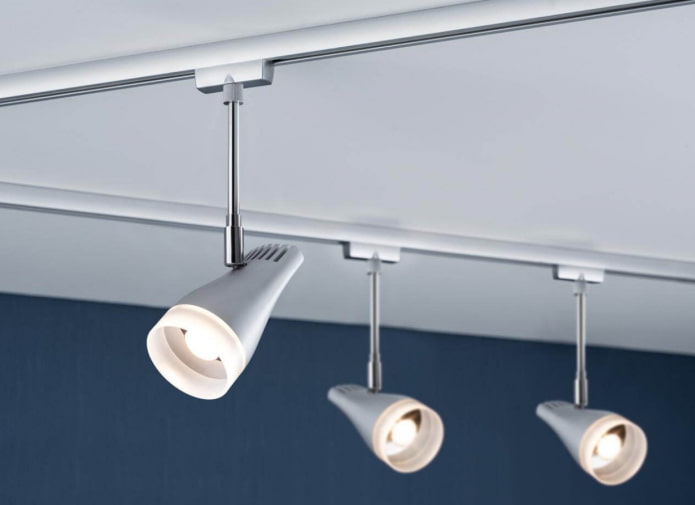
Fluorescent
Bright, economical. Usually used for accent lighting.
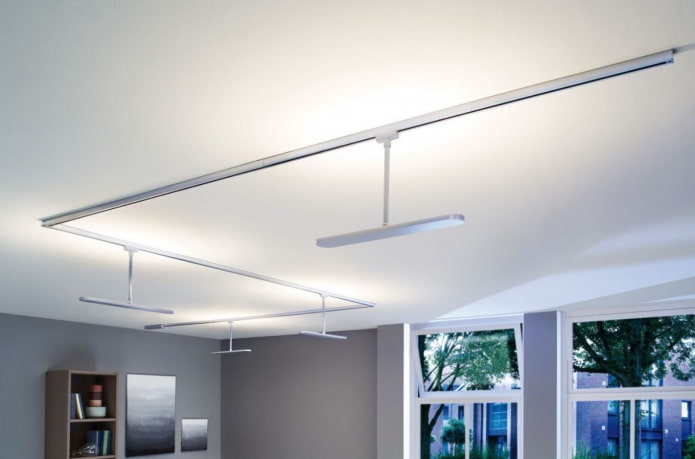
LED
Diodes are the most modern track solution. They shine brightly and evenly, serve for a long time, and are economical in electricity consumption.
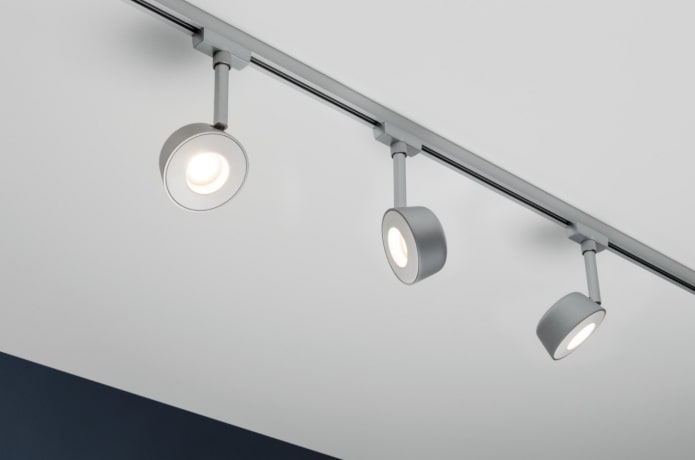
By number of phases:
Single-phase
All lamps are controlled by one button, there is no possibility to customize scenarios.

Two-, three-phase
The lamps are divided into 2-3 groups, controlled by different switch buttons. They are switched on separately.
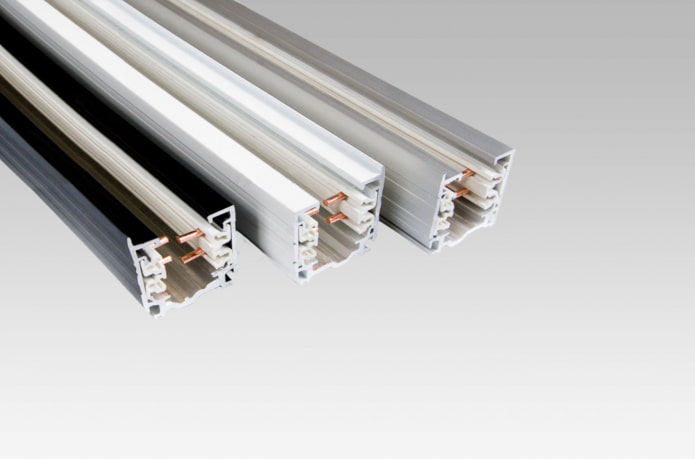
What to consider when choosing?
When choosing track lighting for your interior, pay attention to the following characteristics:
Installation type
First of all, decide on what base and how you are going to install the structure – the choice of the main element – the profile – depends on this. They can be suspended, surface-mounted, and built-in.
Element material
Lightweight and reliable aluminum is an excellent choice for both busbars and lampshades.
Control options
In the previous section, we already discussed busbar options by the number of phases: one phase is usually sufficient in one-way rooms, such as a hallway or bathroom. Two or three are already necessary in bedrooms, living rooms, kitchens, offices, children’s rooms.
Thanks to the settings, you can install a single system, for example, above the work area and the dining table, but turn the elements on and off separately from each other.
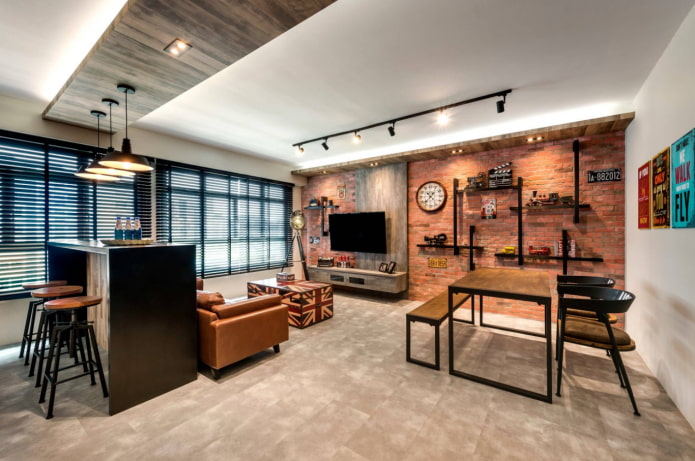
In the photo, a black track light in the loft style
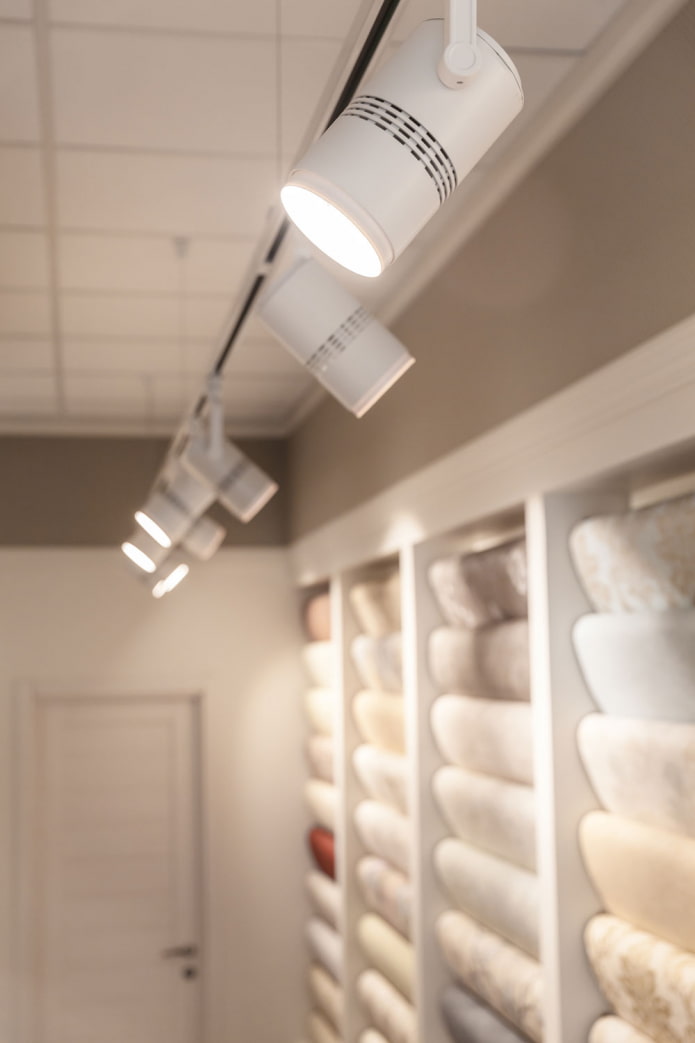
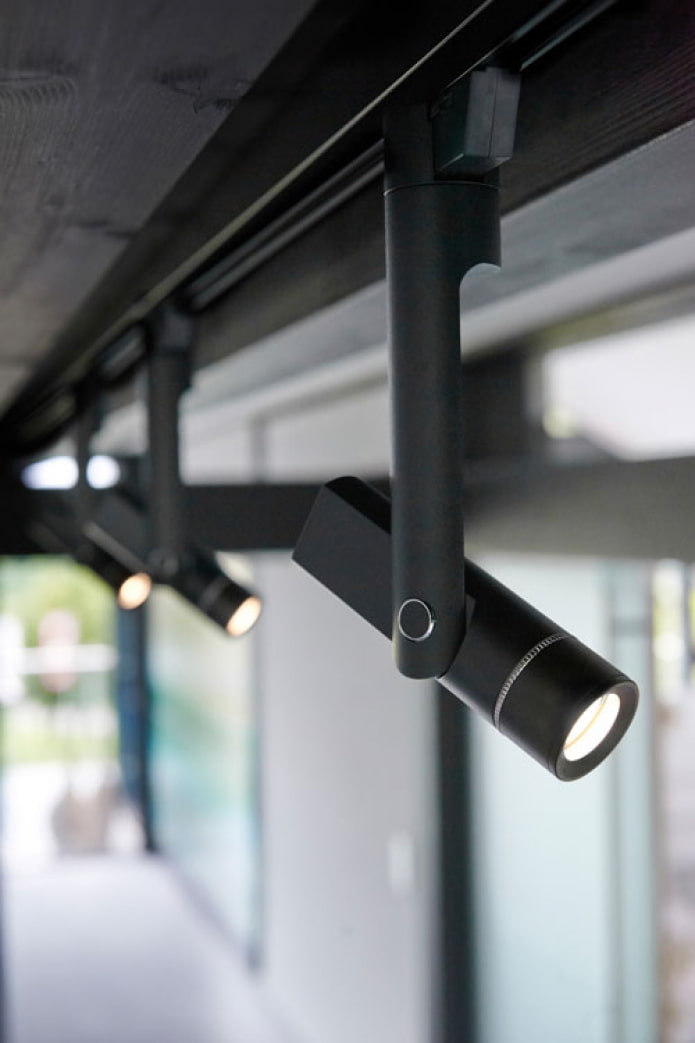
Type, lamp power
Using modern LED bulbs, you simultaneously save on electricity and provide yourself with even, bright lighting without flickering or glare. Although LEDs are more expensive than halogen ones, they last longer: an average of 7-9 years.
To correctly determine the required power, you should calculate the required figure based on the area of the room: for example, a living room requires bright light of ~3 W (LED!) per 1 square meter. Accordingly, a 20m2 living room will need lamps with a total power of 60 W. This can be 10 pieces of 6 W or 6 brighter ones of 10 W.
Additional features
In bathrooms and toilets, it is essential to select components with protection of at least IP44 – otherwise, high humidity can lead to a short circuit in the wiring. The second example is the line voltage: do you need 220, 380 or 12 volts?
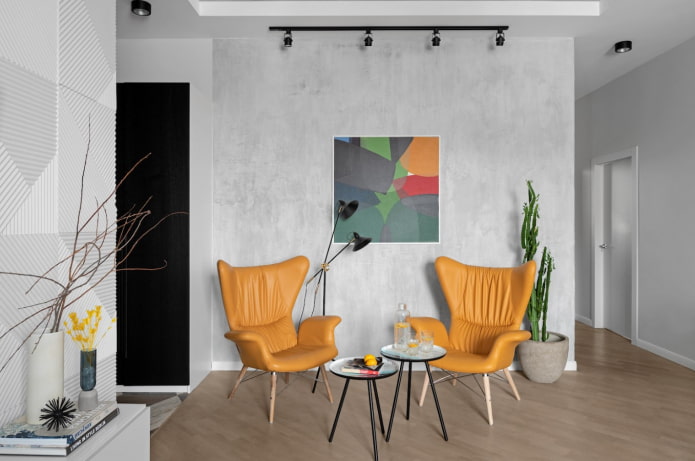
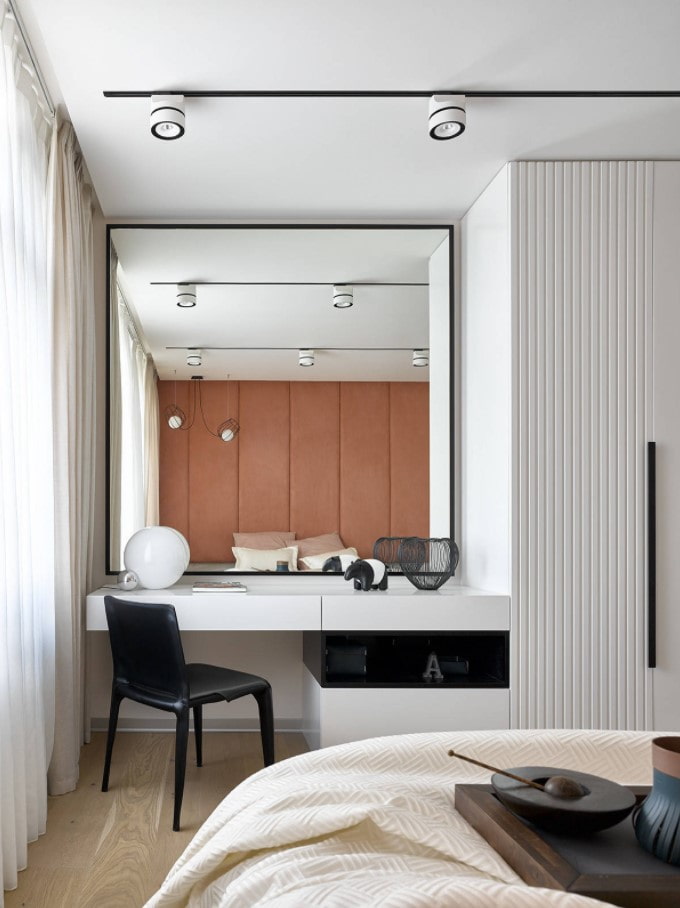
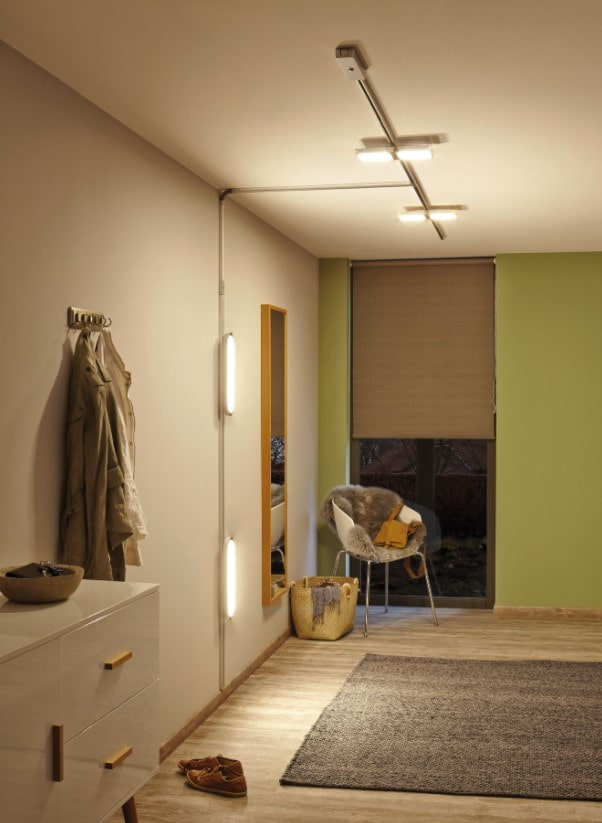
Design
The decorative component includes styling, color, and shape of lampshades. For example, minimalist and futuristic models are suitable for the high-tech style. Flexible ceiling lights will look better in a classic interior. For the loft style, there are generally track lights in the form of pendants.
As for the shade, choose one that suits your interior. Standard color variations include white, black, chrome. Bronze, copper, platinum, and gilding are less common. Colored designer sets are even less common.
The last difference is the shape of the case. A cylinder or cone is considered universal. Fashionable original ones resemble small spotlights and are suitable as an idea for modern interiors. There are also balls, squares, flat circles, elongated oblong lamps.
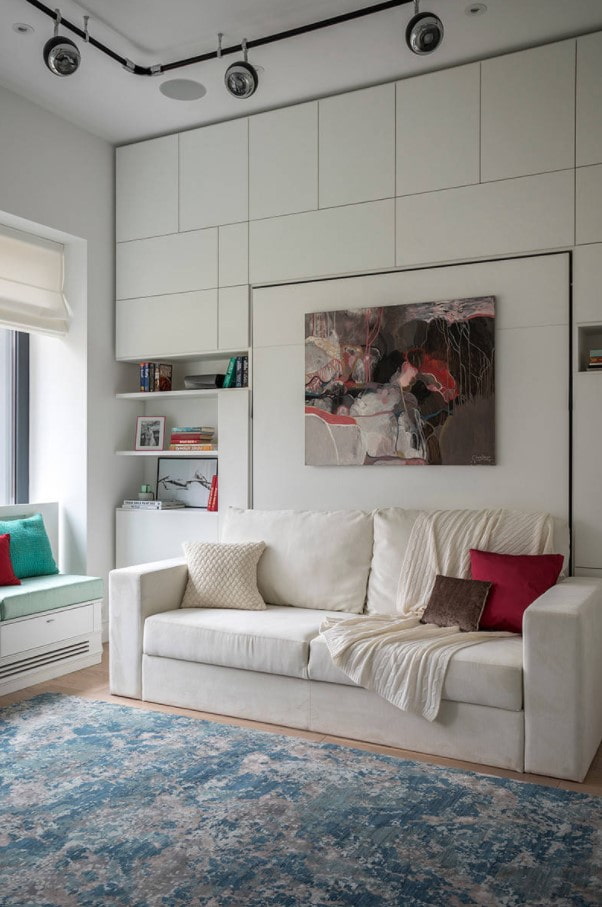
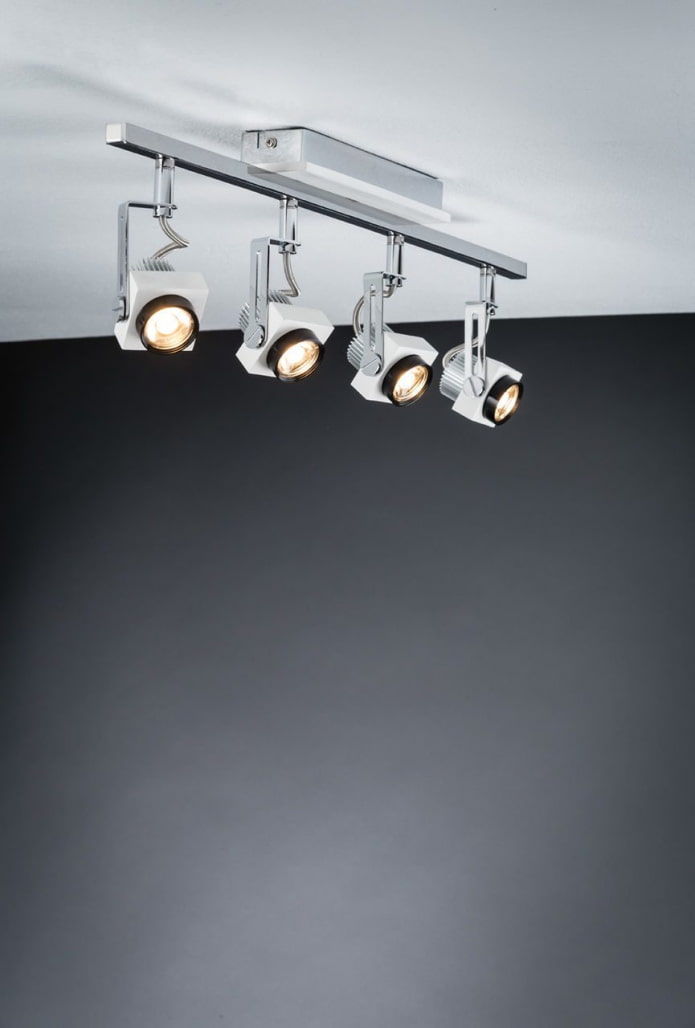
What is the best way to arrange them?
The placement of track lights in a room depends on two components: the shape of the room and its functionality. This leads to 3 main layout schemes:
See examples of lamp layout on a stretch ceiling.
Line
Used in three cases.
- First: when track lamps are an integral part of the overall lighting concept. In this situation, they illuminate one of the zones: for example, a desk, a kitchen countertop, a cabinet.
- Second: the track is located in a narrow elongated space. For example, a corridor. Then directional bright light in the center along is more than enough.
- Third: a wide room, where light lines are installed parallel to each other. The number of lines is not limited. Usually 2-5.
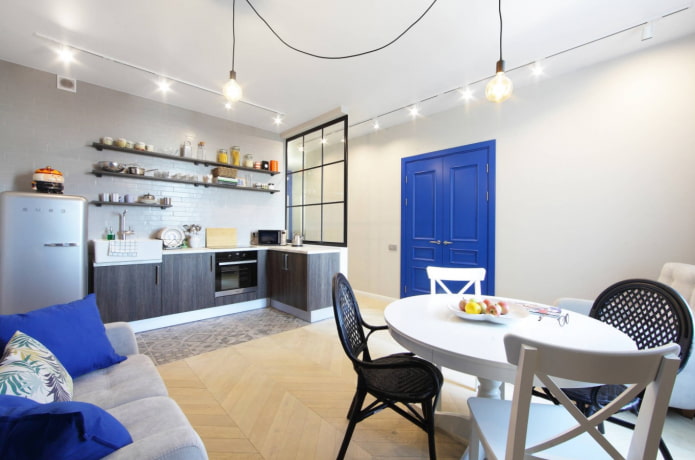
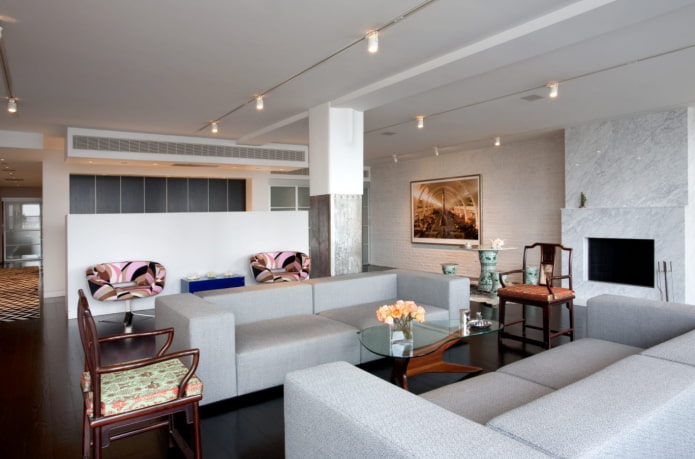
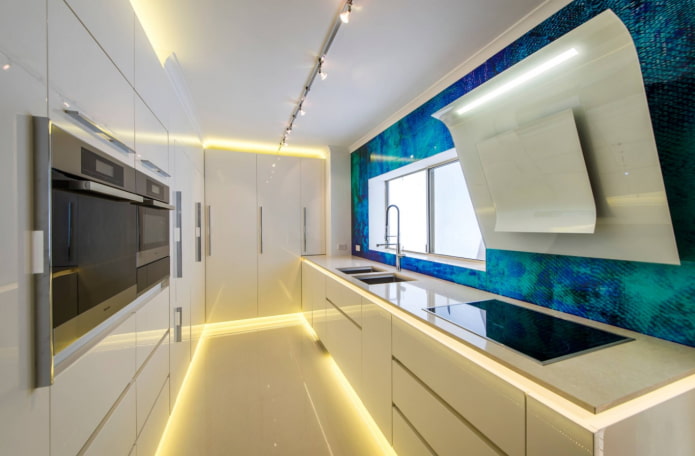
Corner
When there are not enough lines, but you don’t want to occupy the entire ceiling area with a track. Often used in corner kitchens, above corner sofas, in L-shaped layouts.
Square, rectangle
A “closed” figure outlines the contour of the room: relevant in the case when all the lighting is tied to track lighting. The lamps are placed along the contour, pointing in different directions – somewhere to highlight a picture on the wall, somewhere a table.
Sometimes it is also used together with a chandelier in the center or for zoning the room in an open layout. For example, a square of tracks highlights the living room area.

The photo shows contour lighting in the living room
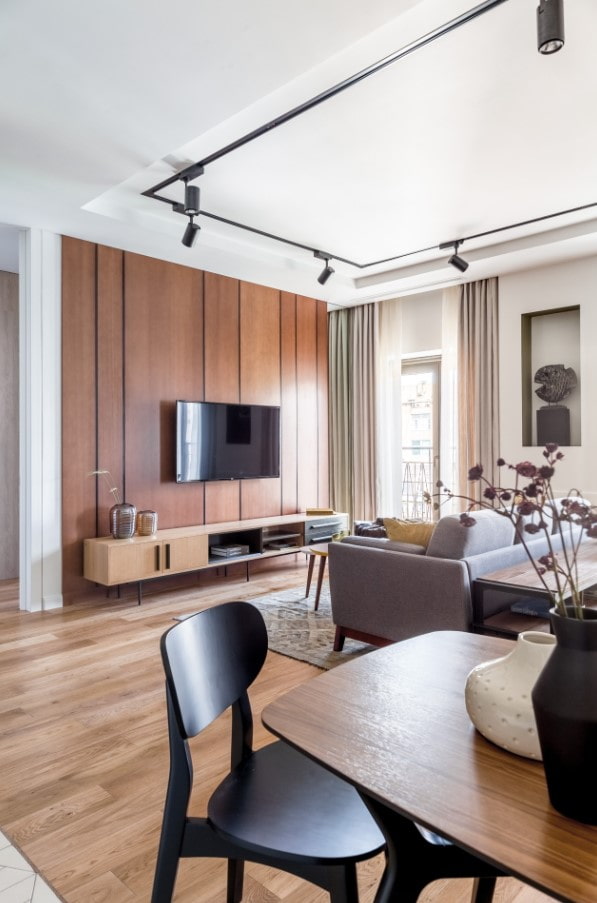
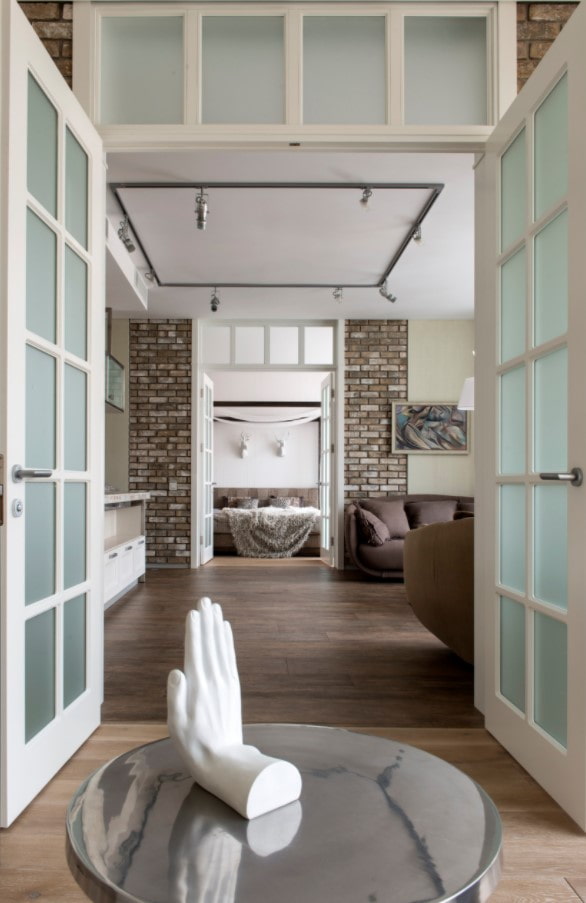
The last nuance concerns not the shape, but the format: most often, track lights are installed surface-mounted. That is, the track and lamps remain visible. But in some cases it is appropriate to resort to masking techniques, hiding the track in a niche or fixing it between the beams in a slatted ceiling, for example.
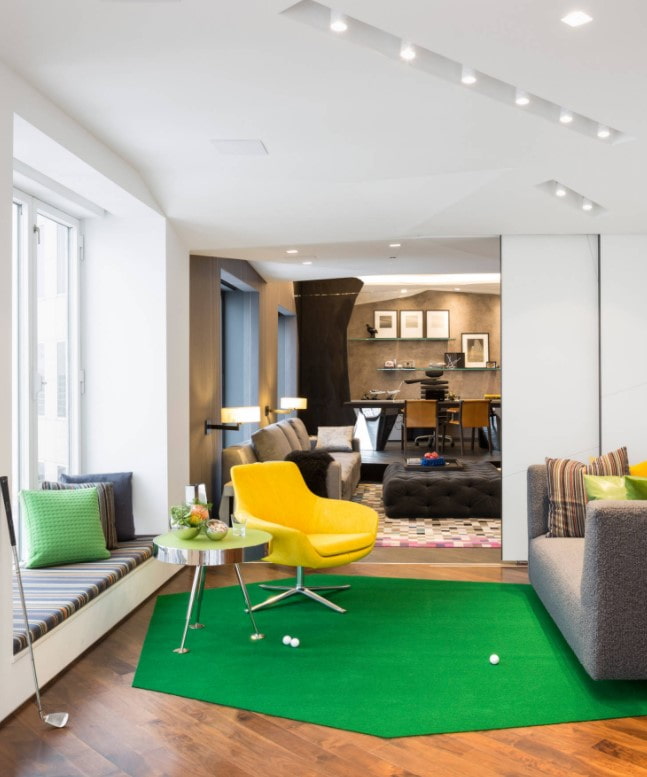
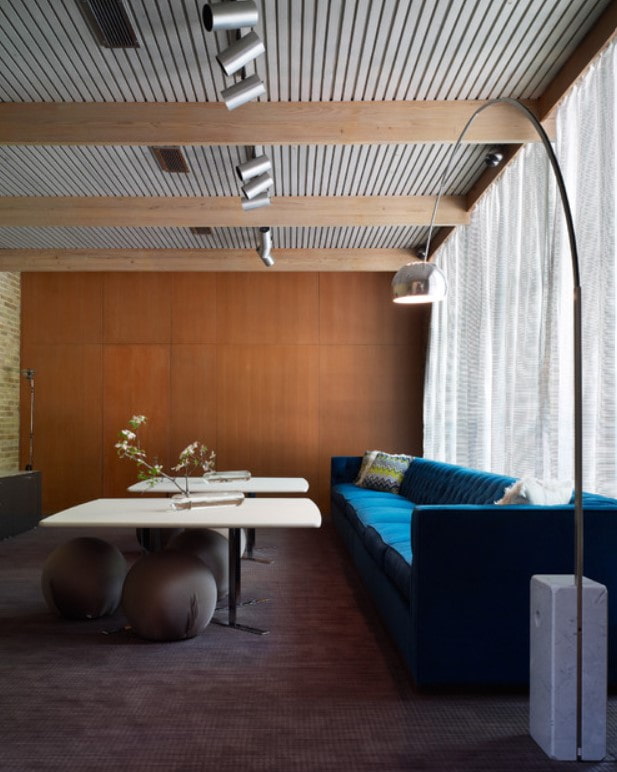
How do they look in the interior?
Track lights are an ideal solution for any room: from the hallway to the bedroom or nursery. How are they used in spaces with different functionalities?
Kitchen
Almost all kitchens have 2 zones that require lighting: the dining room and the work area. The ideal solution would be a two-phase bus so that the zones could be illuminated separately.
The lighting above the countertop needs to be bright, and above the table – soft and diffused. Instead of high ceiling spotlights in the area of the dining table, bar counter, peninsula or island, it is acceptable to mount low pendants on the track.
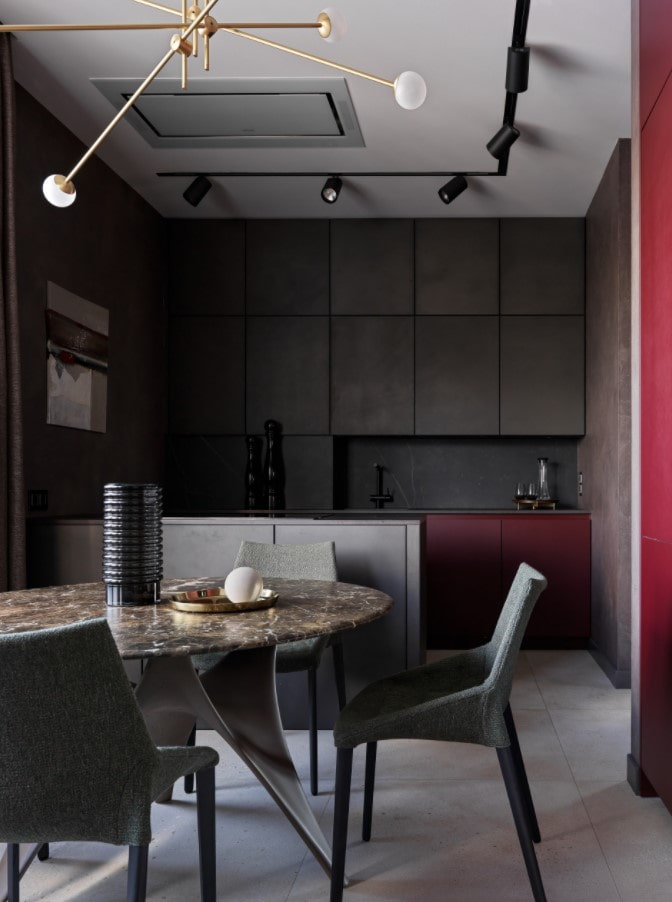
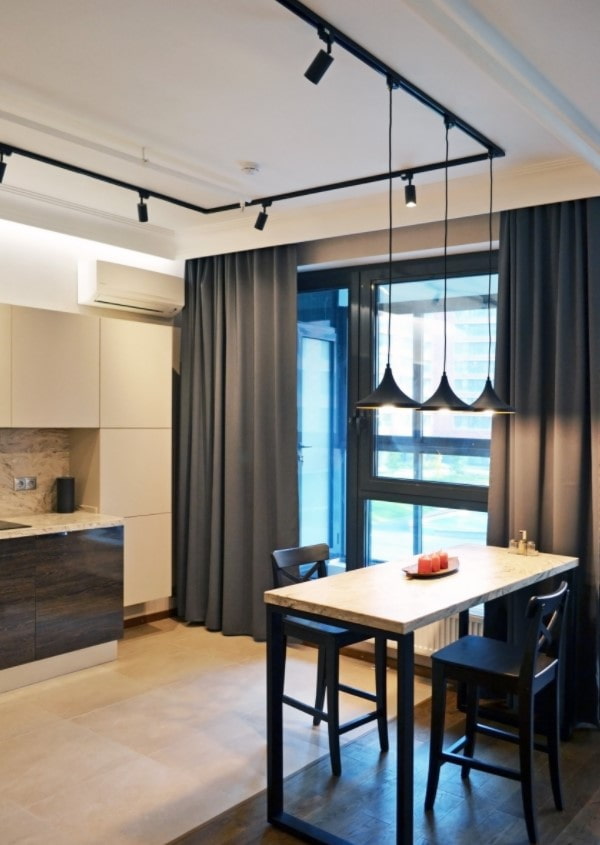
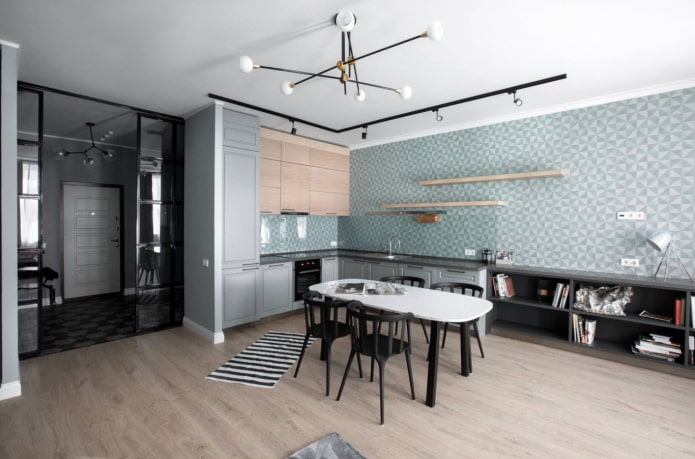
The photo shows the lighting of the work area in the kitchen
Living room
There are many scenarios for using the hall: in addition to a space for relaxing with a sofa and TV, the living room has a desk, a play area, a corner for reading or doing hobbies. Therefore, the scenarios are built in accordance with the functionality.
The most comfortable option is when, in addition to the main bright lighting, used, for example, during meetings with friends, there is decorative lighting. The last one with a low brightness level, unobtrusive: it turns on when you want to watch a movie in the evening or just relax.
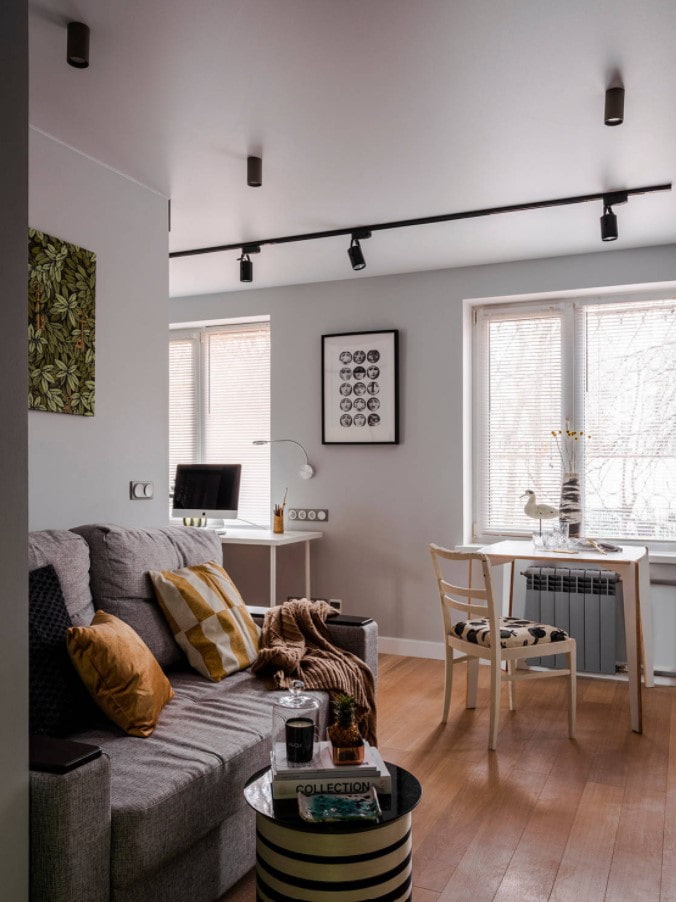
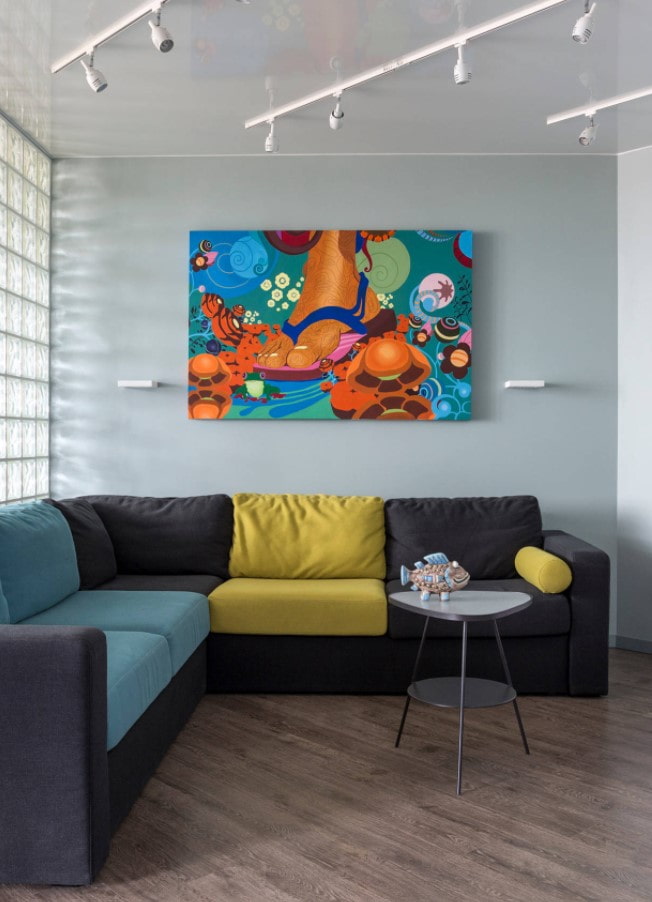
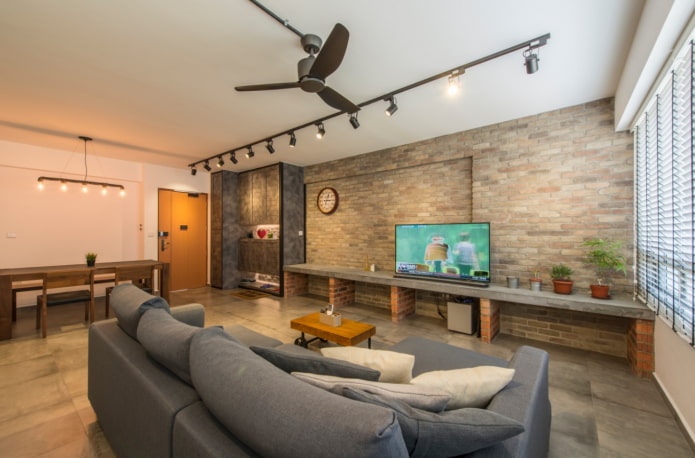
Bedroom
Track lights in the bedroom act as the main light, and are also present in the design of additional areas: as a backlight for a wardrobe or dressing table.
If you decide to install them above the bed, place them above the headboard, pointing them at the wall behind your head: this will help avoid lamps shining into your eyes while going to bed.
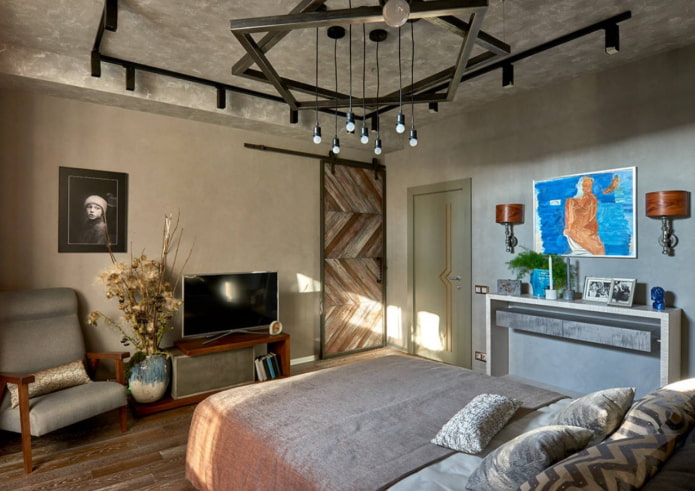
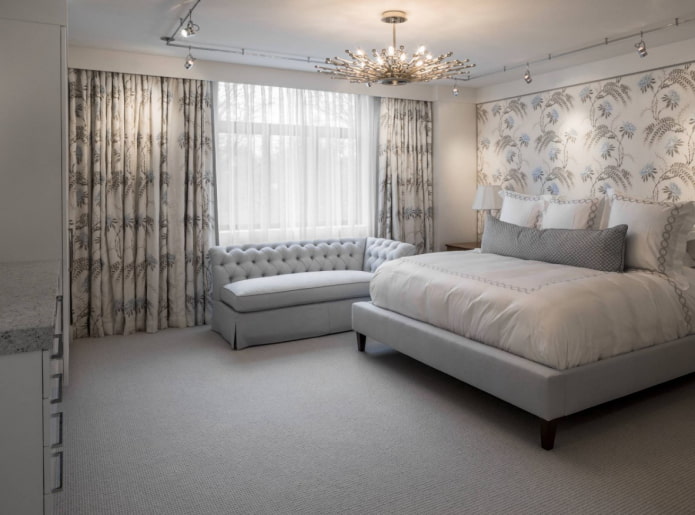
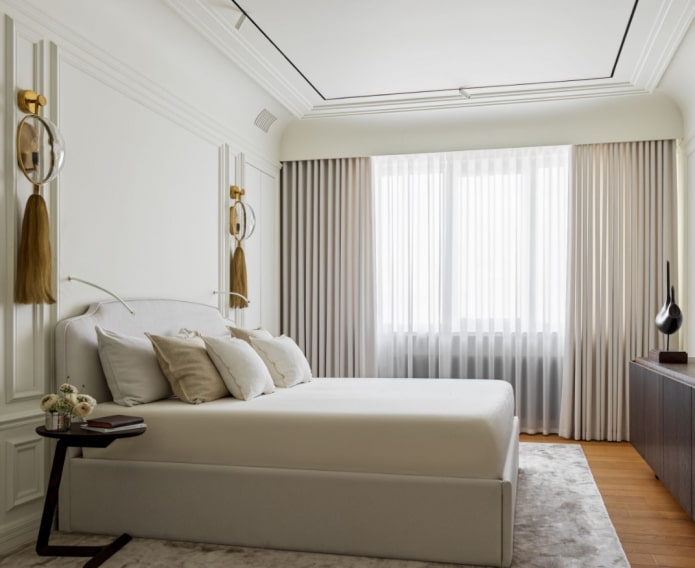
Bathroom
High-quality lighting in the bathroom is no less important than in the kitchen or living room. In a large bathroom, the following zones are illuminated separately: toilet, mirror, shower. In a small room, a central square with LED lamps is enough to create an even glow around the entire perimeter of the room.
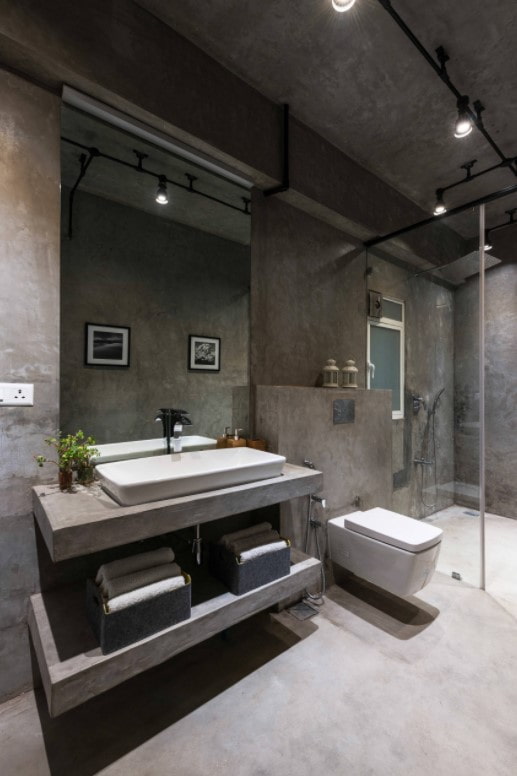
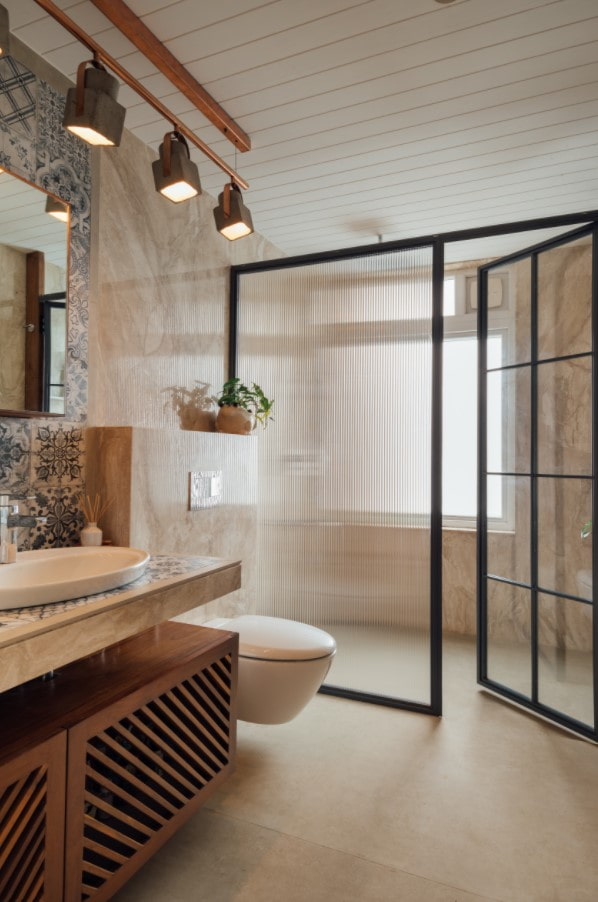
Hallway
Corridors can be different and the lighting in them will naturally be different. The simplest option is an elongated “trailer”. Most often, the guide is laid along the direction of the long wall, and the lamps turn in different directions. In a square one, a square is used, in an L-shaped one, a convenient corner scheme is used.
The flow of light from the hallway to the living room looks impressive – in this case, the lamps are used as a force that unites the space.
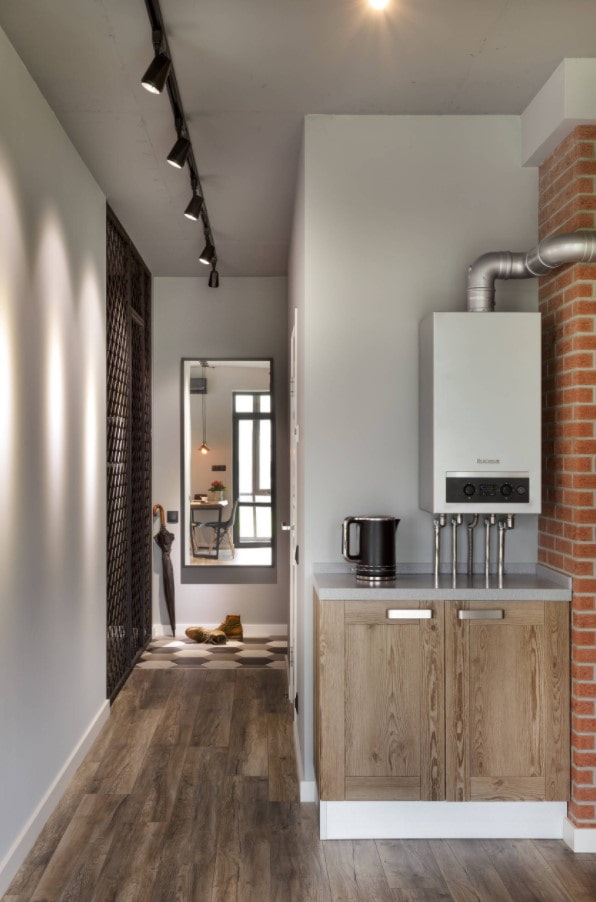
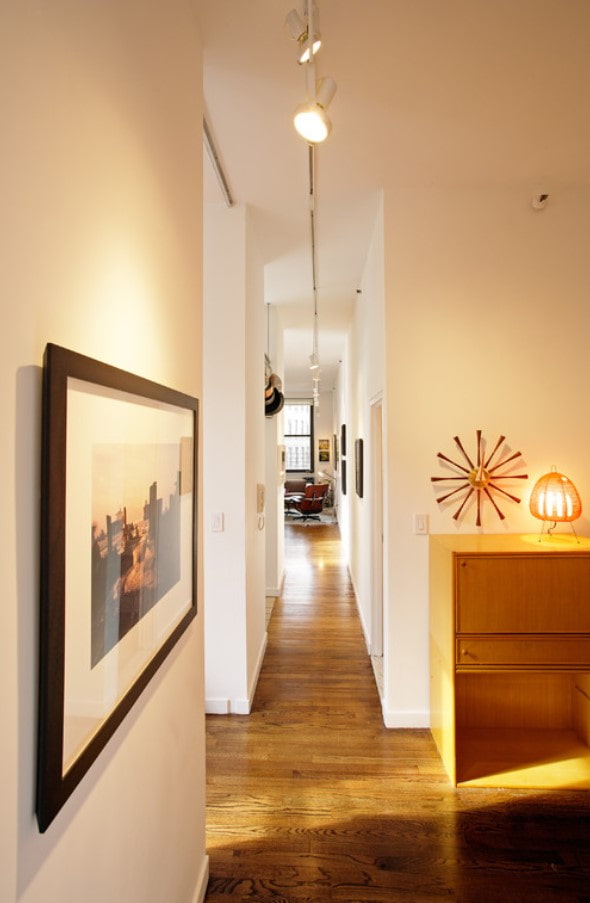

The photo shows a built-in track light in the hallway
Children’s room
Since the child’s room grows and changes with him, a track system that adapts to changes is an ideal choice.
Another reason why directional light is widely used in children’s rooms is the presence of wall decor. Here, more than in any other room, it requires additional emphasis.
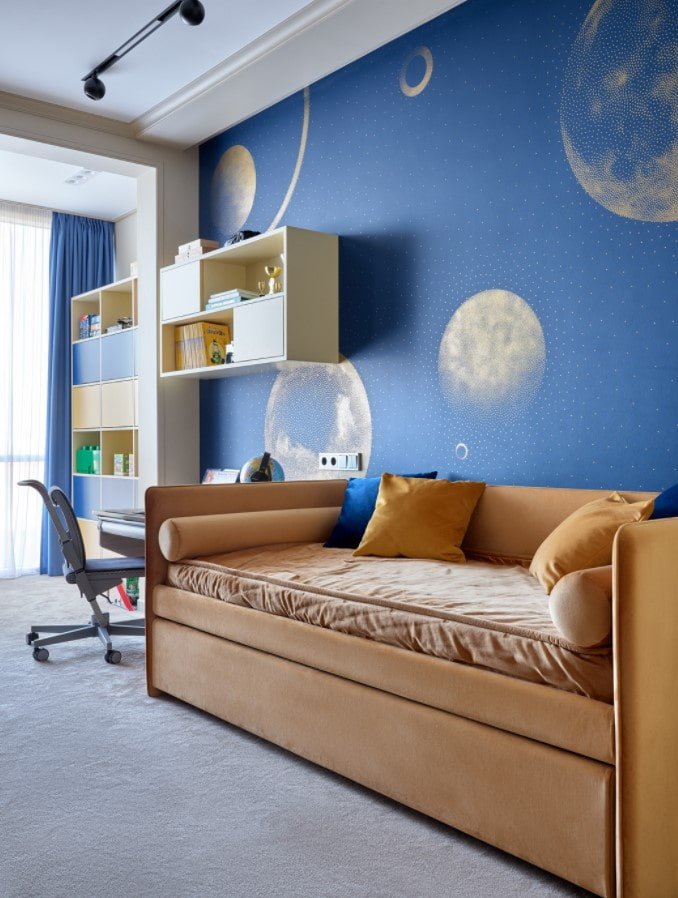
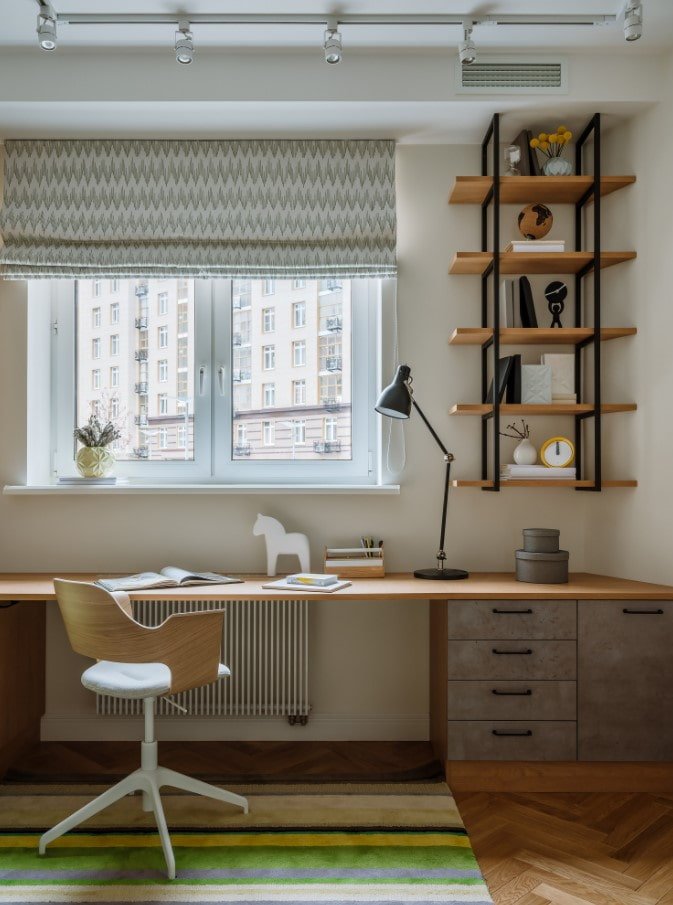
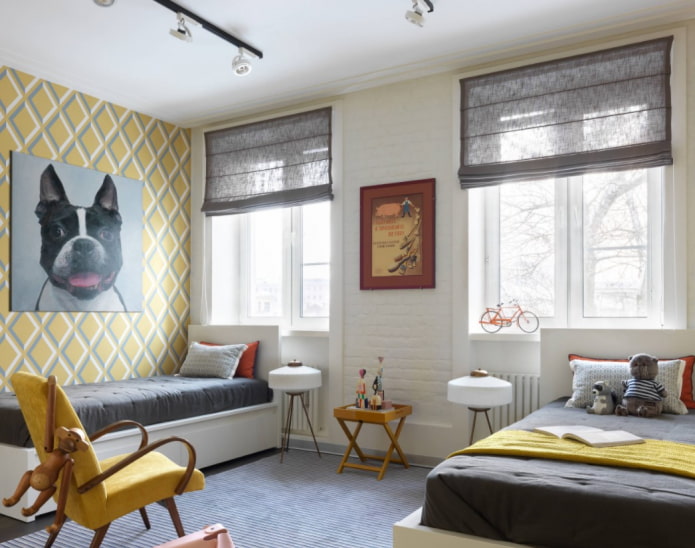
It is not without reason that track lighting has gained popularity among designers and ordinary buyers. Consider this option for your interior, because the advantages of tracks more than pay for the high price.
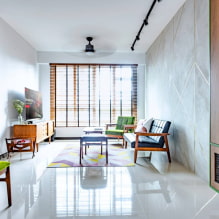
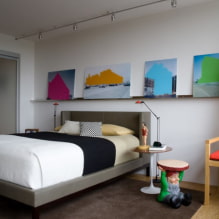
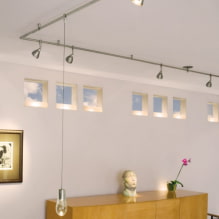
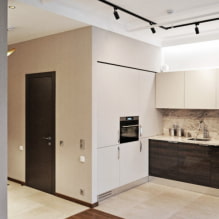
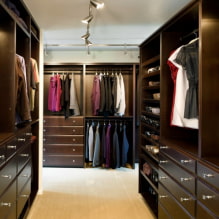
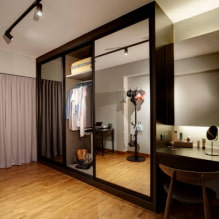
Now reading:
- Pistachio Style: Design Ideas and Color Combinations (37 Photos)
- Your Ultimate Guide to Buying a Used Peugeot 807
- Patchwork tiles for kitchen and bathroom: design ideas and 50 inspiring photos
- 10 unusual options for wall decor instead of a painting that will surprise you.
- Creative Ways to Organize Toys in a Kids Room